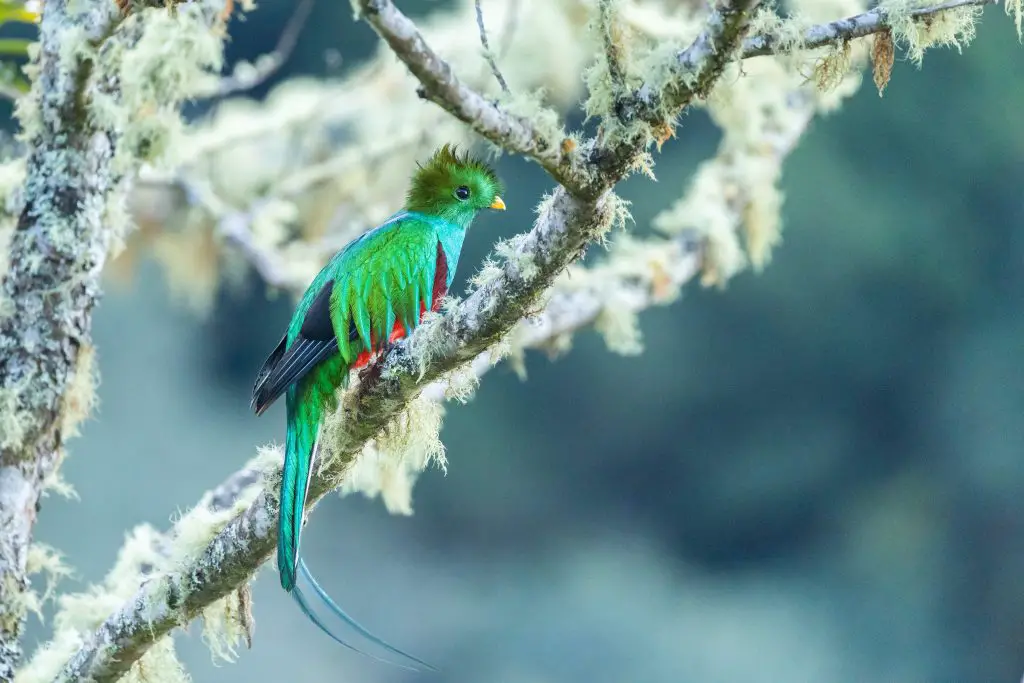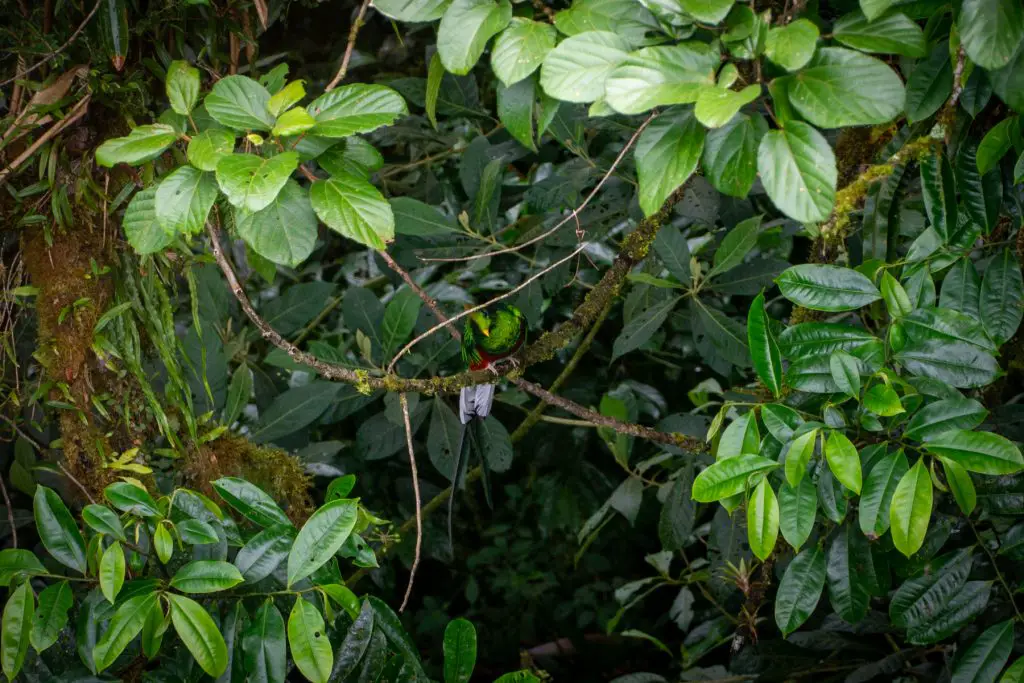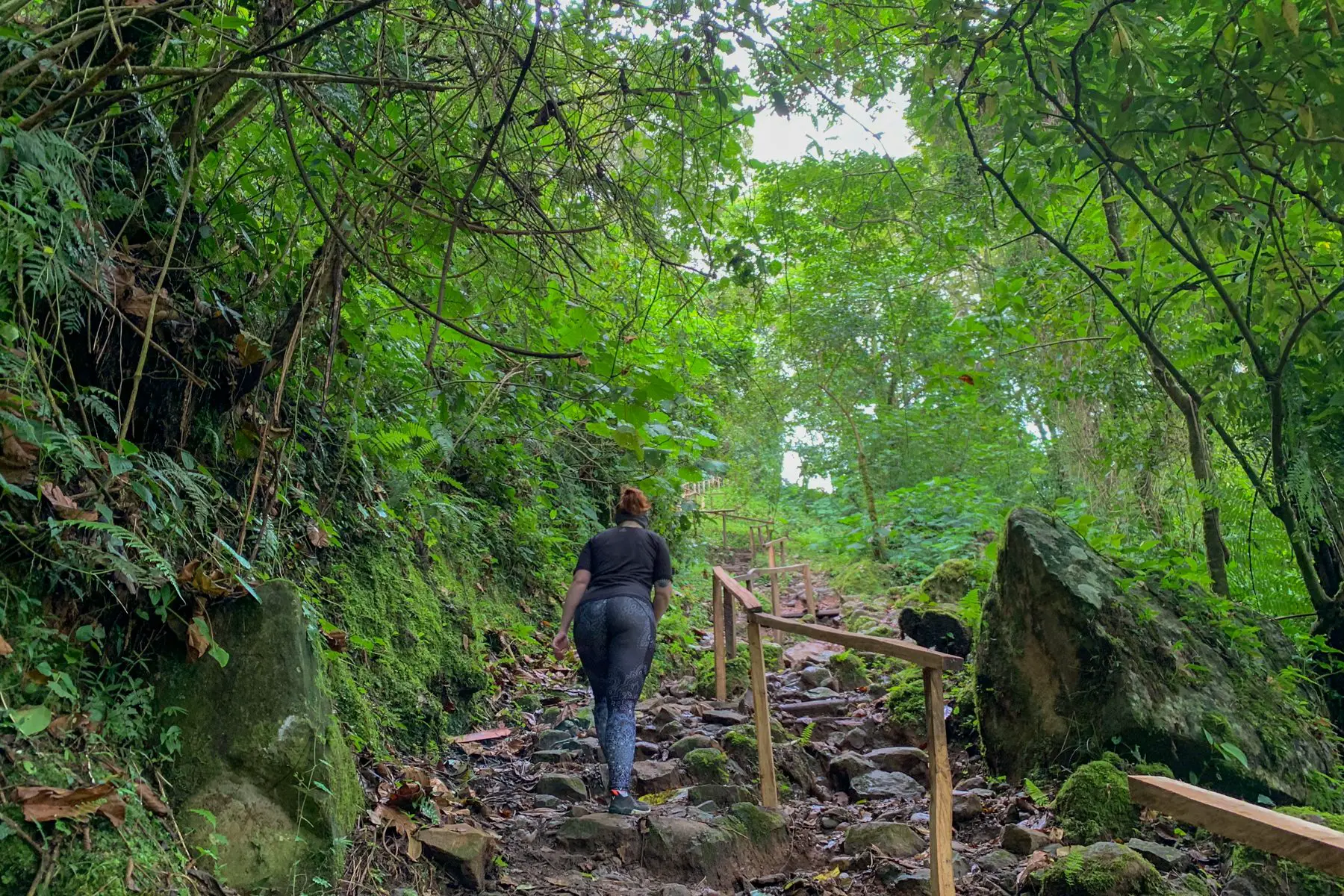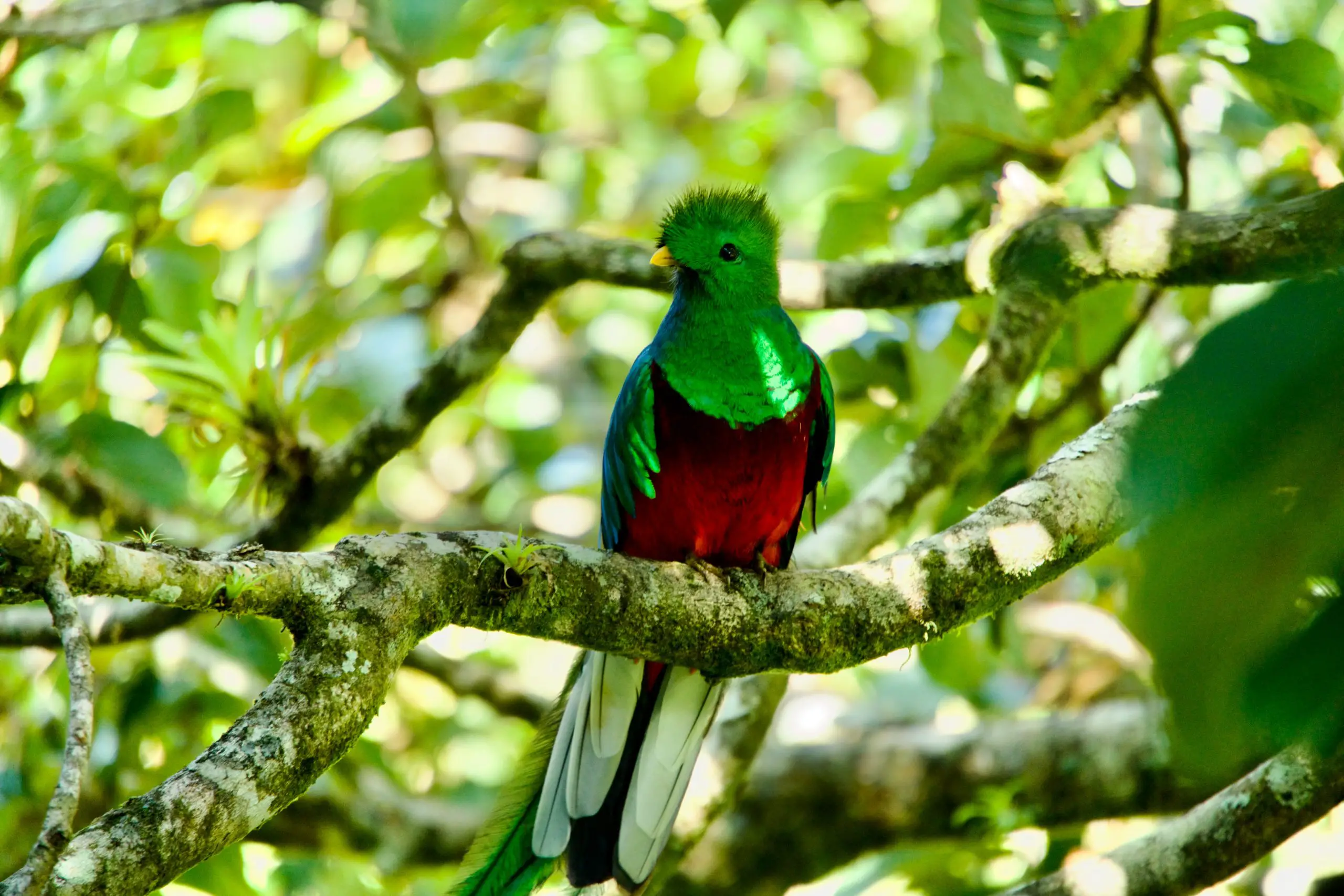Panama is home to a myriad of exotic birdlife and the most famous of these is the eye-catching resplendent quetzal. Known for its colourful plumage and dangling tail feathers, this brightly coloured bird is a must for any twitchers spotter’s sheet.
If you’re visiting the country and want to spot a quetzal in Panama, you’re in the right place! I’ll tell you exactly where to find these beautiful birds and when.
Read more: (opens in new tab)
A Guide to Spotting Quetzals in Panama
An Introduction to the Resplendent Quetzal
Owing to its fame in certain parts of the country, many wrongly state that the resplendent quetzal is Panama’s national bird. This is not correct. The national bird of Panama is the harpy eagle which lives in the forests of the Darien province.
The resplendent quetzal (Pharomachrus mocinno) is the national bird of Guatemala, although it can be seen all over Central America, in Costa Rica, southern Mexico, Honduras, El Salvador and Panama. Although there are several types of quetzals around the world, the resplendent quetzal is easily recognisable for its colourful plumage and iridescent feathers, designed to help it blend into its cloud forest environment.

The resplendent quetzal is an emerald green colour, with a fluffy head and bright red breast. It has beautiful dark eyes and a small yellow beak but is most recognisable for its long and narrow tail feathers. It is only the males which have the long tail feathers and their plumage is brighter than the females.
Unfortunately, the resplendent quetzal is near threatened on the IUCN Red List. Habitat loss is believed to be one of the main reasons for its declining numbers but illegal trading is also a threat to populations.
Where Can I See Quetzals in Panama?
If you want to spot quetzals while travelling in Panama, you should head to the Chiriqui Highlands, close to the border with Costa Rica. The most popular place to base yourself in your quetzal spotting quest is the mountain town of Boquete.
Known for its high altitude and proximity to Volcán Barú, Boquete attracts hiking and nature enthusiasts from all over. One of Panama’s most famous hikes, Sendero Los Quetzales, located in Volcán Barú National Park, was long touted as the best place to spot them. However, this trail has been closed for a couple of years and has yet to reopen.
Luckily for travellers, there are countless good places to spot quetzals all over Boquete, including the Lost Waterfalls trail, the hanging bridges and the Pipeline Trail, to name a few. If you spot a fruit tree, remember to look up – you never know whether you’ll spot a quetzal enjoying lunch in the branches above!

When Can I See a Quetzal in Panama?
While knowing where to see quetzals in Panama is a good start, this information is largely useless if you don’t visit at the right time of year. February through April is the best time to search for the elusive quetzal bird in Panama as this is mating season.
The breeding season also coincides with Panama’s dry season, meaning that the birds will likely be more active due to the relatively dry days. Quetzals are at their most active around midday, so make sure you’ve made it to the heart of the cloud forest by then. This will heighten your chances of seeing them in the wild.
The Call of the Resplendent Quetzal
Now that you know to be in the right place at the right time, you need to know what to look for. Perhaps the easiest way to narrow your search down is to listen for the call of the quetzal. In my opinion, it sounds a little like a dog whining but have a watch of the video below to make up your own mind.
Tips For Spotting the Resplendent Quetzal in Panama
- Hire a guide
Bird watchers will likely have more success searching for quetzals in the company of a local guide. These experts know exactly what areas the birds favour and are more likely to spot them in the wild.
- Bring binoculars
Any good twitcher knows that the way to make the most of spotting rare and exotic birdlife is to bring binoculars. This will give you a much better view of these beautiful birds. If you have hired a guide, they will likely provide binoculars for the excursion.
- Wear appropriate jungle clothing
Although not quite the Amazon, plenty of the same rules apply when it comes to clothing choices for the cloud forests. Quick dry material which covers your arms and legs is advised, as are sturdy walking shoes.
- Prepare to get wet
By nature, the cloud forest is a wet environment. Make sure you pack a decent rain jacket!

- Stay quiet
As with any kind of wildlife spotting, it is best to keep quiet when searching for birds. Sudden loud movements can scare them off so make sure you keep noise to a minimum when you’re looking for quetzals.
- Remember a waterproof case for your camera
Capturing wildlife on camera should be secondary to enjoying the experience of seeing the animal in the wild. While it is always satisfying to get the golden shot, don’t grapple for it at the expense of your own experience. And if you do choose to bring a camera, make sure you remember a waterproof case for it!
Also read: Getting from Panama City to Boquete.
Fun Facts About Resplendent Quetzals
- The tail feathers of the resplendent quetzal can grow up to three feet long!
- Guatemala’s official currency is named after this iconic bird.
- Mayan and Aztec cultures are believed to have used the feathers of the resplendent quetzal as currency.
- It takes up to three years for the male quetzals to grow their tail feathers to their full length.
- The word quetzal means both precious and sacred in a few Mesoamerican languages.
Is the resplendent quetzal on your spotter’s list? Let me know if you have any luck seeing it in Panama!


